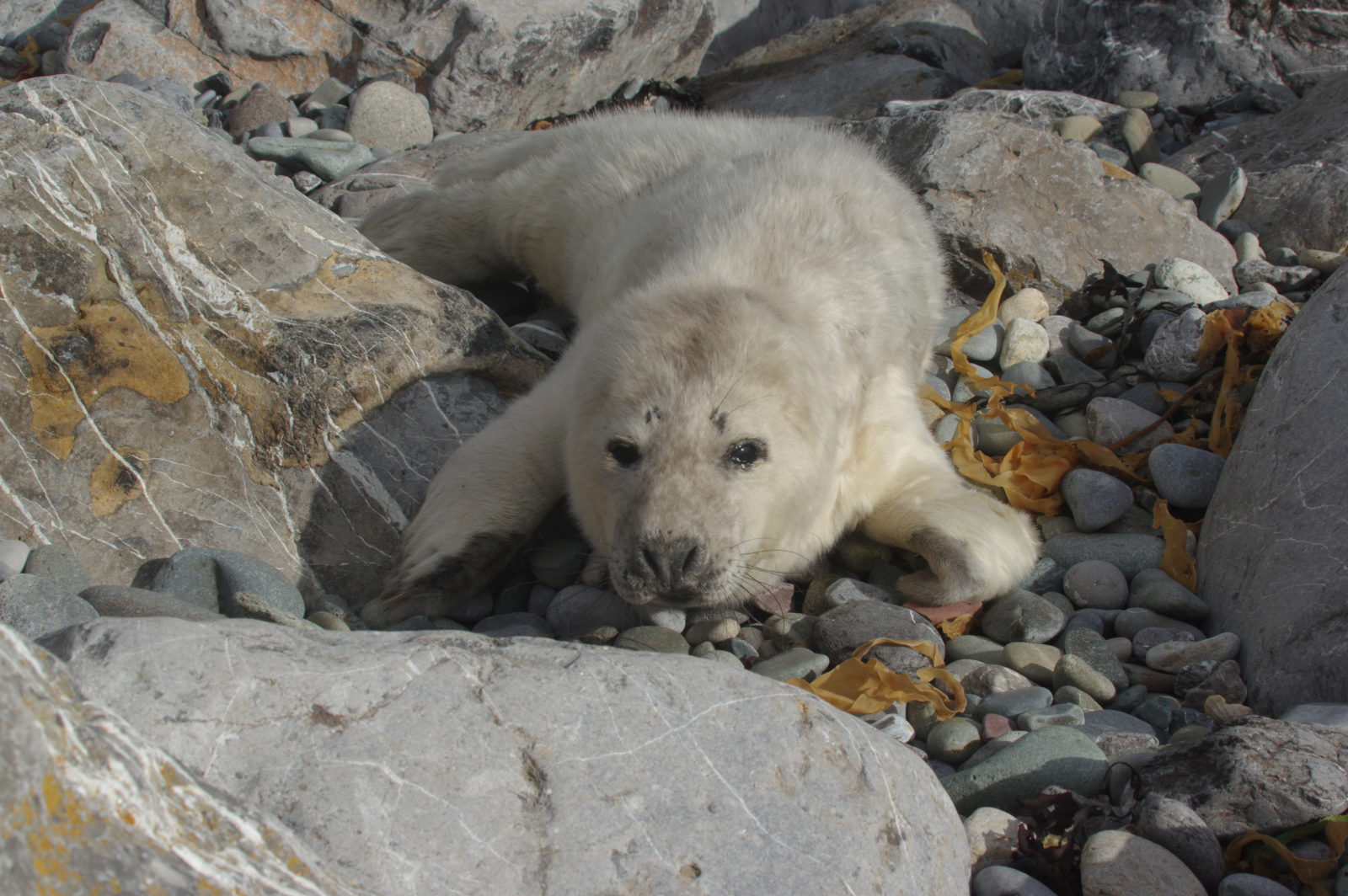From September through to November, National Trust Cymru is excited to be welcoming some very special guests to the Blue Lagoon, Pembrokeshire.
Recent years have seen increasing numbers of the Grey seal population breeding in and around the lagoon and spotting them is an exciting wildlife encounter that many visitors won’t forget. However, the combination of the Blue Lagoons high visitor numbers, and its sheltered nature which makes it so attractive to seals, creates a situation where there is a high potential for disturbance to seals.
The time seals spend resting on land is vital to their health and that of their pups as they are digesting a recent meal, socialising, and feeding their young. In order to provide them with a safe environment to raise their pups, National Trust Cymru will be closing the Blue Lagoon to visitors from 25 September through to 5 November.
Visitors will still be able to watch these wild creatures in their habitat from the coastal path and coasteering activity providers who have signed up to the National Trust’s Coasteering Agreement and undertaken specific training on how to operate around seals, will still have access to the lagoon with groups of visitors who have booked in advance.
Mark Underhill, National Trust Cymru’s Countryside Manager, Pembrokeshire said:
“There are two species of seal that can be found in Britain; the Common seal and the Grey seal. Only Grey seals occur regularly in Pembrokeshire, where they are present all year around.
“About half the world’s population of Grey Seal breed on our coastline and the total number in West Wales, mostly Pembrokeshire, is estimated to be about 5,000, with some 1,400 pups being born each year.
“The breeding season is vital for our seal colonies here in Pembrokeshire, and we ask that visitors do not access the Blue Lagoon and that they follow the guidelines laid out by the Seal Alliance and Pembrokeshire Marine Code when on the coastal path.”
Paul Renfro from the Pembrokeshire Coastal Forum says;
“The Pembrokeshire Marine Code recommends remaining at least 50m away from the seals, though they can be disturbed at any distance so it’s important to be responsive to their behaviour.
“If a resting seal looks up or turns to looks at you then you are close enough at whatever distance you are at. Seals can be particularly sensitive to disturbance after periods of stormy weather and during the breeding season so we recommend giving them extra space at these times.”
To avoid disturbing seals at this very important time of year, National Trust Cymru recommends adopting the following strategies:
- Sssh, stay quiet:
Channel your inner David Attenborough and speak with a low voice and encourage your children to do the same. Noisy dogs can frighten seals so if your four-legged friend is a bit chatty, please leave them at home when you visit a seal breeding area. - Don’t get too close:
Ensure you stay at least 50 metres away from seals (three London buses in length) and never come between a seal and her pup, or a seal and the sea. Doing so will cause distress to both the mother and pup. - Keep dogs on a short lead:
Keep your dog on a short lead. Do not allow them to run loose or play with balls, frisbees or sticks anywhere near a breeding colony as this will cause them distress
What to do if you spot a seal in distress:
- If you spot a lone seal pup on a beach it’s probably not in distress. Seal pups are often left alone on the beach whilst its mum goes off to catch dinner.
- Never approach the seal. It will cause further distress and may be dangerous for you and the Seal.
- Look to see how many people there are about. In most cases when seals are in distress it’s due to contact with curious and well-meaning visitors.
- If you are still concerned, contact conservation group Welsh Marine Life Rescue 01646 692943 or 07970 285086 who will be able to offer you further guidance.









Leave a Reply
View Comments